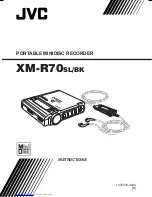
Chapter 1
Connections and Setup
Things to consider before you connect
Protect components from overheating
•
Don’t block ventilation holes on any of the components. Arrange the components so
that air can circulate freely.
•
Don’t stack components.
•
When you place components in a stand, make sure you allow adequate ventilation.
•
If you connect an audio receiver or amplifier, place it on the top shelf.
Position cables properly to avoid audio interference
•
Insert each cable firmly into the designated jack.
•
If you place components above the TV, route all cables down the side of the back of the
TV instead of straight down the middle of the back of the TV.
•
If your antenna uses 300-ohm twin lead cables, do not coil the cables. Also, keep the
twin lead cables away from audio/video cables.
Types of discs your DVD player can play
•
DVD discs – contain high quality picture and
sound content.
•
DVD Audio discs – contain high quality sound
content.
•
Audio CDs – contain musical or sound content
only.
•
Video CDs – Like DVD video discs, Video CDs
contain picture and sound content. The difference
is the amount of information that can be stored
on the disc.
•
CDs with JPEG files and/or MP3 files on them.
Some discs may not be
compatible due to laser pickup
and disc design.
VIDEO CD
Install Batteries in the Remote
1. Remove the battery compartment cover on the back of the remote.
2. Insert new batteries. Match the polarities (+ and –) on the batteries with the diagram on
the remote.
3. Put the battery compartment cover back on the remote.
Important Battery Information
•
If you’re not going to use the remote for a month or more, be sure to remove the batteries because they can
leak and cause damage.
•
Dispose of batteries in the proper manner, according to federal, state, and local regulations.
•
Any battery may leak electrolyte if mixed with a different battery type, if inserted incorrectly, if all batteries
are not replaced at the same time, if disposed of in fire, or if an attempt is made to charge a battery not
intended to be recharged.
•
Discard leaky batteries immediately. Leaking batteries can cause skin burns or other personal injury.
2
chapter 1
Graphics are for representation only. Your unit might differ from pictures in this book.
DRC700N.part1.7.26.02 8/1/02 11:05 AM Page 2





































